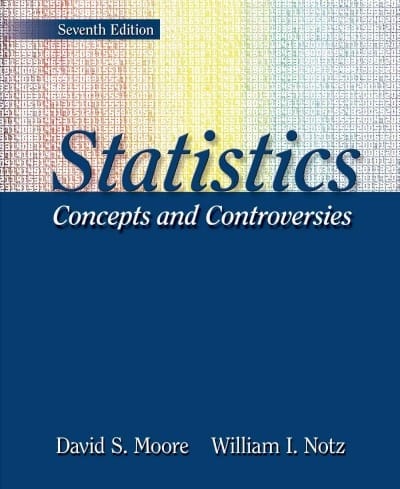Lowering the drinking age. Exercise IV.2 concerns a random sample of 464 adults. Suppose that, in the
Question:
Lowering the drinking age. Exercise IV.2 concerns a random sample of 464 adults. Suppose that, in the population of all adults, exactly 75% would say that they would oppose a federal law that would lower the drinking age in all states to 18. Imagine that we take a very large number of SRSs of size 464.
For each sample, we record the proportion ^p of the sample who would oppose a federal law that would lower the drinking age in all states to 18.
(a) What is the sampling distribution that describes the values ^p would take in our samples?
(b) Use this distribution and the 68–95–99.7 rule to find the approximate percentage of all samples in which more than 77% of the respondents would oppose a federal law that would lower the drinking age in all states to 18.
Step by Step Answer:

Statistics Concepts And Controversies
ISBN: 9781429277761
7th Edition
Authors: David S Moore, William I Notz





